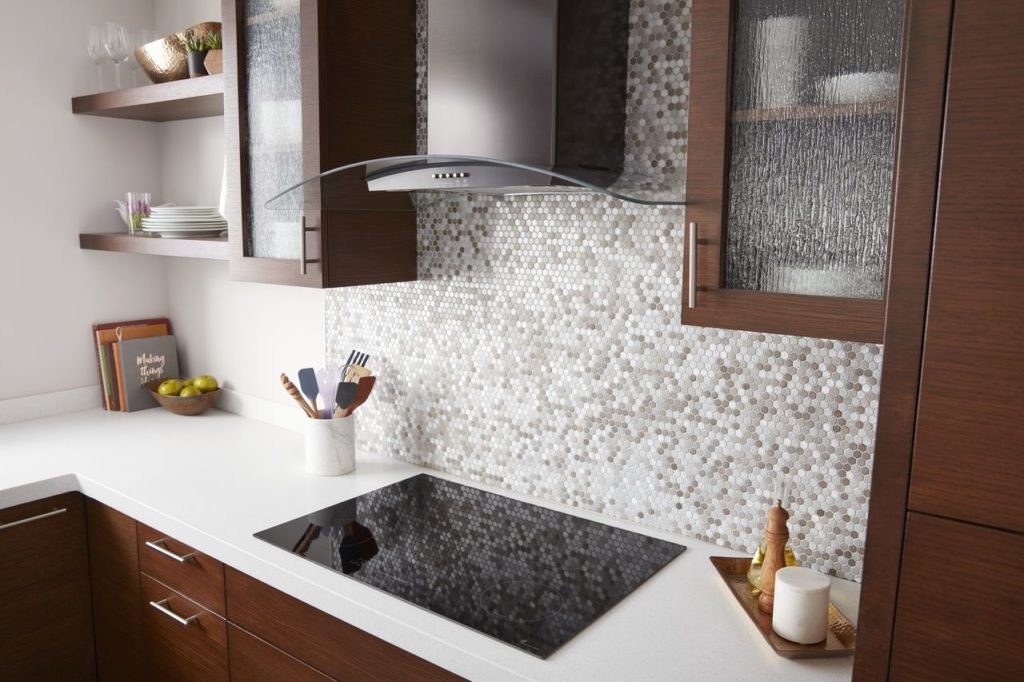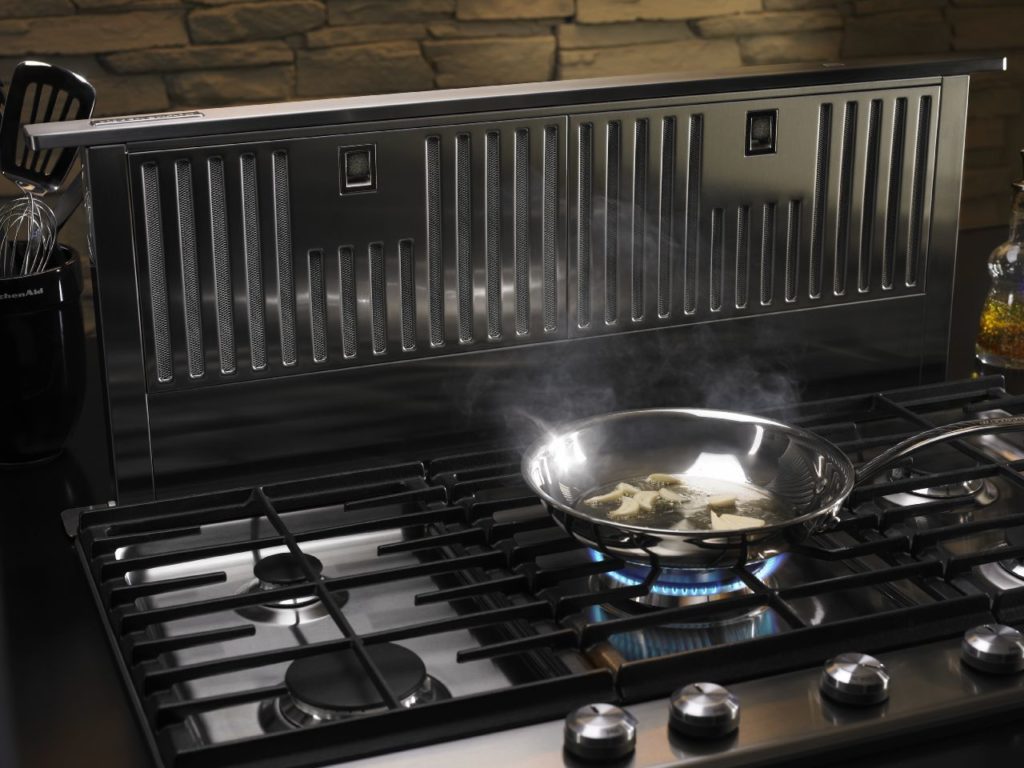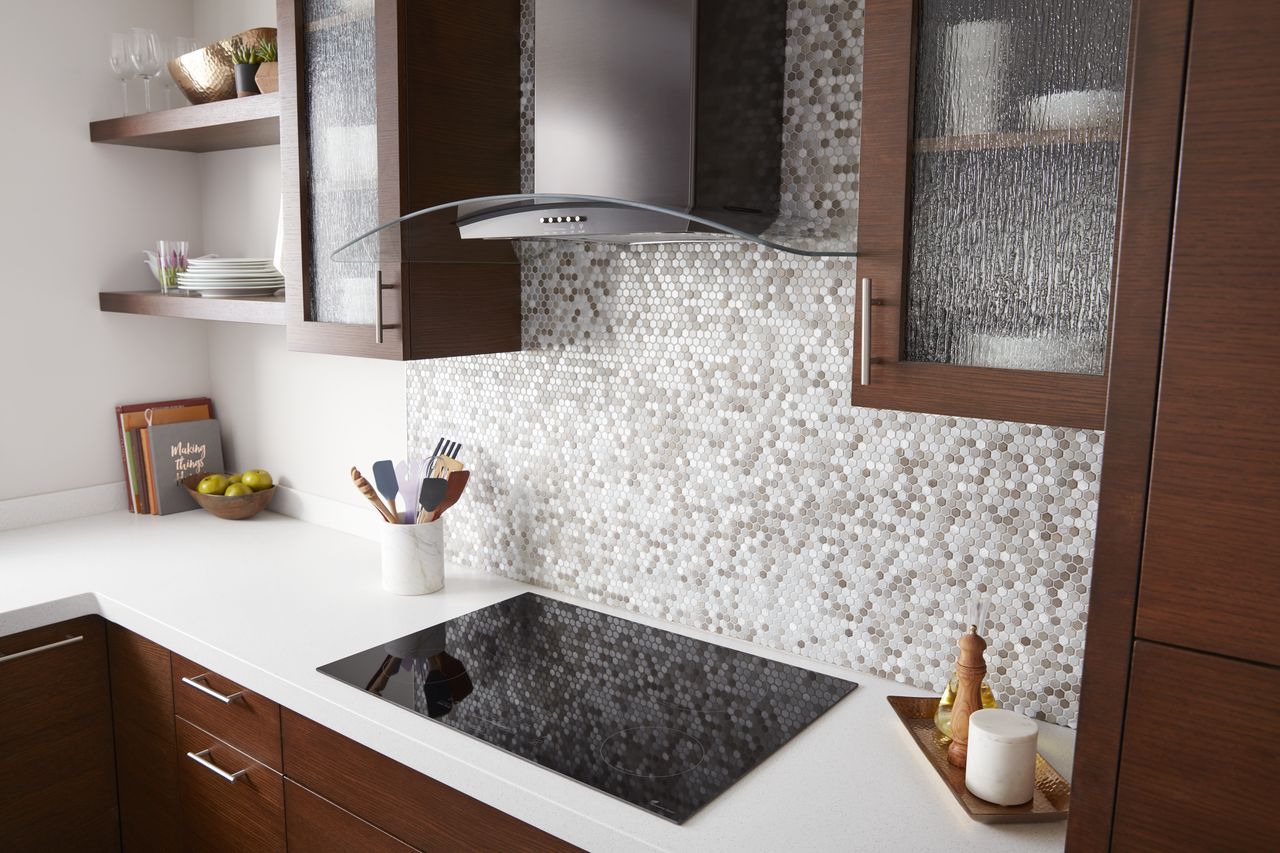
There are two main options when it comes to kitchen ventilation: an updraft range hood or a downdraft vent. Which is better depends on your needs, your space, and your preference.
To start, you need to determine your minimum ventilation requirement. Ventilation strength is measured in CFM, or cubic feet of air moved per minute, and there are a number of factors to consider when determining how many CFMs you need.
Measure the width of your cooking surface. It’s recommended that you have 100 CFM for every 12 inches of cooking space, and 100 CFM for every 10,000 BTUs your stove is capable of generating. Cooking with gas will require a minimum of 400 CFM. At a bare minimum most building codes require 400 CFM when you’re cooking with gas, and if you cook with a lot of oils then you’ll need to add an additional 100 CFM to ensure you have enough ventilation to draw the grease from the air.
Updraft Kitchen Ventilation
Updraft ventilation consists of a vent (or hood) located above a cooking surface. Air is drawn into the fan, passes through filters, and is either exhausted outdoors through a metal duct or re-circulated back into the kitchen. This type of ventilation is the most effective for removing smoke, odours, and particulates naturally rise into the vent.
The downside to updraft ventilation (pardon the pun) is keeping the apparatus clean: filters must be checked, cleaned and in some cases changed regularly and the vent may be difficult to clean. Some fans are noisy – do a sound-check before you buy. And the more sophisticated the design, the more costly the apparatus.
However, if you have professional-level appliances, do a lot of grilling or frying, or cook with gas, then you should definitely consider updraft ventilation. Visually, updraft ventilation can be more obtrusive, but your kitchen will stay cleaner, you’ll successfully vent more heat, and capture more odours then you will with a comparable downdraft unit.
Downdraft Kitchen Ventilation

Downdraft ventilation is integrated into your countertop or cooking appliance for a more streamlined appearance. In fact, most models feature a vent that rises up next to the cooktop when you are cooking and then recedes back into the base when not in use. Drawing air down from the cooking surface, downdraft appliances vent through your cabinetry where the filtered air is then recirculated or vented outside.
If your cooking generates a lot of steam, if you have an island cooktop that can’t support a hood, or you really just don’t like the look of an over-the-range appliance, then a downdraft vent could be your best choice. Easier to clean and more effective at whisking away odours and smoke than updraft units, downdrafts struggle when it comes to drawing steam from taller pots and pans. They may also “steal” some heat from your cooktop and because of those types of inefficiencies, they generally aren’t recommended if you require more than 300 CFM.
When it comes to ventilation, it’s always better to be safe than sorry. Be sure to talk to a contractor if you have any concerns and always remember that you can never have too much fresh air.
Isabelle, Your Appliance Expert

